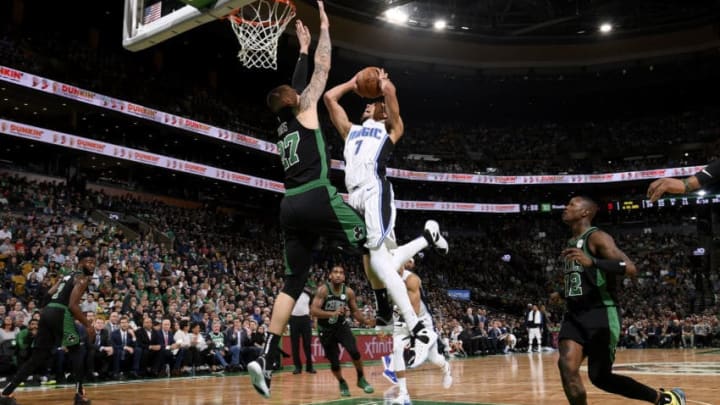2018-19 Orlando Magic Player Evaluations: Michael Carter-Williams

The Good and the Bad
| Season | Tm | G | MP | FG% | 3P% | eFG% | FT% | TRB | AST | STL | BLK | PTS |
|---|---|---|---|---|---|---|---|---|---|---|---|---|
| 2018-19 | TOT | 28 | 13.3 | .374 | .263 | .415 | .604 | 2.5 | 2.5 | 0.7 | 0.5 | 4.8 |
| 2018-19 | HOU | 16 | 9.1 | .410 | .368 | .467 | .462 | 0.8 | 1.3 | 0.6 | 0.4 | 4.3 |
| 2018-19 | ORL | 12 | 18.9 | .339 | .158 | .363 | .741 | 4.8 | 4.1 | 0.9 | 0.8 | 5.4 |
| Career | 315 | 26.2 | .401 | .251 | .423 | .702 | 4.5 | 4.6 | 1.3 | 0.6 | 10.9 |
Provided by Basketball-Reference.com: View Original Table
Generated 5/10/2019.
Michael Carter-Williams still has a lot of flaws in his game. His numbers bear that out. He scored only 5.4 points per game and shot 33.9 percent from the floor overall in his 12 games with the Orlando Magic. His shooting struggles ultimately derailed his career and that remained an issue.
In the playoffs especially, his poor shooting came to the forefront. The Toronto Raptors were willing to collapse the paint and dare players like Carter-Williams to shoot.
What was amazing in the regular season, at least, was how little that mattered in terms of overall impact. The Magic were simply a different team with Carter-Williams on the floor.
The team had a +13.0 net rating, the best mark of any rotation player on the team. The Magic were significantly better offensively — 115.0 points per 100 possessions — and better defensively — 102.0 points allowed per 100 possessions.
The Magic had a 98.7 pace for the entire season. The team had a 105.6 pace with Carter-Williams on the floor. That increased pace for the bench units especially was something Clifford and the Magic were looking for.
That was the biggest difference Carter-Williams provided. There was just a different energy when Carter-Williams took the floor. He made a lot of little plays that do not show up on a box score. That is what those on-court numbers show.
It was a small sample size for sure. And Carter-Williams had his ups and downs throughout his short tenure with the Magic.
He does a good job attacking the paint and getting into the lane. He is great at pushing the pace and working in the open floor. Carter-Williams can make good passes and play within a quick-pace offense.
Those flaws were all on display in the playoffs. Those same on-court numbers were very different in the postseason.
With Carter-Williams on the floor, the Magic had -9.7 net rating and they played at a 100.9 pace (still up from their 95.7 pace for the series). In fairness, the Magic had an advantage off the bench throughout the series (a slight one). And only Khem Birch had a higher on-court net rating among rotation players. And even that was negative.
Nobody played well in the playoffs. So maybe that is an unfair comparison. Carter-Williams actually saw an increase in his raw numbers.
But raw numbers do not measure his impact. Not wholly. And Carter-Williams did a whole lot good than his statistics might suggest.